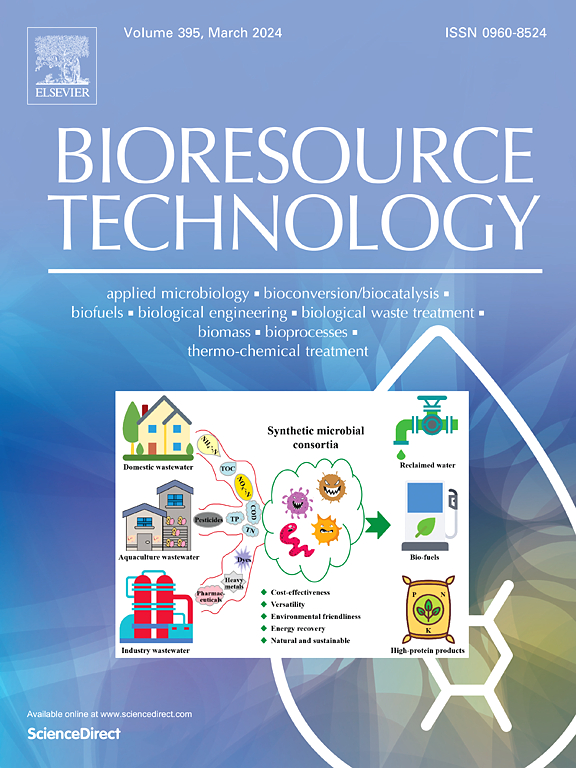Micro-aeration strategy for improved biogas yield and in-situ hydrogen sulfide mitigation during high-solids co-digestion of poultry litter
IF 9
1区 环境科学与生态学
Q1 AGRICULTURAL ENGINEERING
引用次数: 0
Abstract
High-solids anaerobic digestion sustainably converts organic waste into methane-rich biogas and nutrient-rich biomanure, offering dual benefits. This study assessed poultry litter (PL) digestion at 10 %, 30 %, and 60 % total solids (TS) under three setups: (i) PL alone, (ii) co-digestion with food waste hydrolysate (PL + FH) to improve carbon/nitrogen (C/N) ratio, and (iii) in situ desulfurization (St-PL) using sulfur-oxidizing bacteria (SOB) with micro-aeration to reduce H提高禽畜粪便高固体共消化过程沼气产量和原位硫化氢缓解的微曝气策略
高固体厌氧消化可持续地将有机废物转化为富含甲烷的沼气和富含营养的生物粪肥,提供双重效益。本研究在三种设置下评估了10%、30%和60%总固体(TS)下禽肉垃圾(PL)的消化情况:(i) PL单独消化,(ii)与食物垃圾水解物(PL + FH)共消化以提高碳/氮(C/N)比,以及(iii)利用硫氧化细菌(SOB)在微通气条件下进行原位脱硫(St-PL)以减少H2S。30% TS条件下沼气产量最高:12.4 L (PL + FH)、9.9 L (PL)和8.9 L (St-PL)。St-PL中甲烷含量最高(68%),H2S去除率为80 - 92%。然而,由于硫氧化菌(SOB)的代谢活性,在消化中检测到轻微的硫酸盐积累。微生物分析显示厚壁菌门、拟杆菌门、甲烷菌门和甲烷杆菌门占主导地位。本研究展示了一种可扩展的策略,即微曝气结合SOB提高了甲烷产量和沼气质量,同时有效地减少了高固体家禽粪便消化过程中的H2S。
本文章由计算机程序翻译,如有差异,请以英文原文为准。
求助全文
约1分钟内获得全文
求助全文
来源期刊

Bioresource Technology
工程技术-能源与燃料
CiteScore
20.80
自引率
19.30%
发文量
2013
审稿时长
12 days
期刊介绍:
Bioresource Technology publishes original articles, review articles, case studies, and short communications covering the fundamentals, applications, and management of bioresource technology. The journal seeks to advance and disseminate knowledge across various areas related to biomass, biological waste treatment, bioenergy, biotransformations, bioresource systems analysis, and associated conversion or production technologies.
Topics include:
• Biofuels: liquid and gaseous biofuels production, modeling and economics
• Bioprocesses and bioproducts: biocatalysis and fermentations
• Biomass and feedstocks utilization: bioconversion of agro-industrial residues
• Environmental protection: biological waste treatment
• Thermochemical conversion of biomass: combustion, pyrolysis, gasification, catalysis.
 求助内容:
求助内容: 应助结果提醒方式:
应助结果提醒方式:


